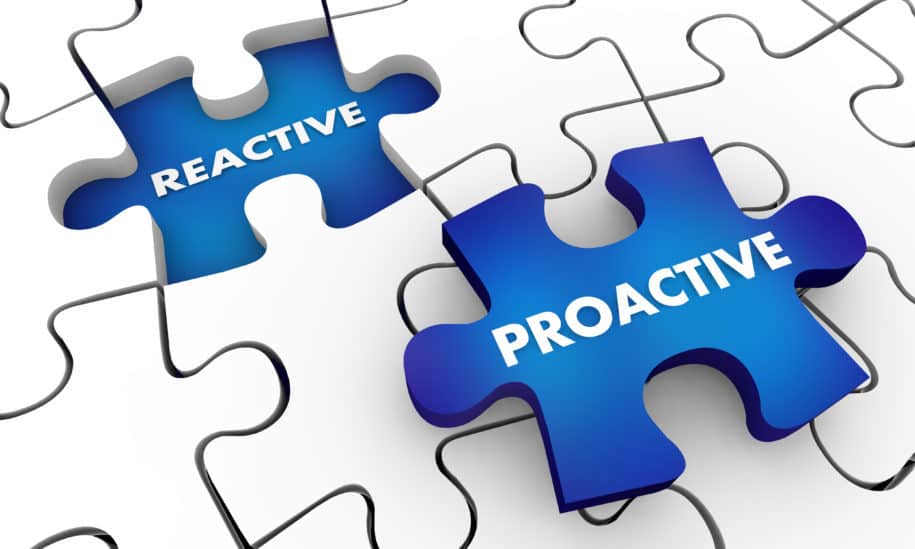In the previous Incident Management and Incident Investigations articles, we focused on two primary objectives. The first was the purpose – to learn and improve instead of blaming and punishing. The findings from an event can prove to be valuable if there is open communication and the company promotes organizational learning. The second objective was like the first – avoiding blame. The concept of how organizations react to news from the workforce determines the ability to get further news or not. How well organizations react and solicit news from events determines the ability and effectiveness to learn and proactively respond to potential issues prior to an unwanted event. These concepts are important but limited if only used after an event occurs.
In his book, aptly titled Pre-Accident Investigations, Todd Conklin offers a great deal of consideration regarding the concept of not waiting for an injury to act and improve. From that book, there are numerous lines of thought such as this: “Errors, near misses, good catches, close calls—any of these factors could indicate there is a problem, without the actual consequences of the failure. Safety professionals look on indicators of this type as ‘gifts.” and “You can’t measure things that don’t happen, but you can talk about changes in attitudes, communication, and early problem identification, and excellent catches that are happening in the field.” (Conklin, 2012). In short, there is no need to wait for an incident to occur to being learning about how work happens to better prepare workers to create safety.
Shared here are some interesting excerpts from fellow safety professionals on the guiding foundational purpose of proactive incident management by acting on weak signals or leading indicators before an incident occurs:
John E. Callery , ★ Quality & Mfg Professional ★
The key is proactive vs. reactive. Incident is a word to be avoided. The focus should be 99% on policy and procedures geared towards proactive prevention. Examples include Gemba, TPM, Layered Safety Audits, employee training, etc.
Jim Loud CSP MS MPH, Safety Management Consultant at James Loud Consulting
Too bad we seem to wait for “surprise” failure before we look for fixes. If we spent more time looking at safety significant work as it is conducted, then partnering with those performing that work to make it safer we would not need to do so many incident investigations. This, of course, requires leaders to get out from behind their desks and look at work as it is performed.
Mike Allocco, PE, (CSP retired), System Safety Engineering and Management of Complex Systems; Risk Management Advisor…Complex System Risks
One needs to design accidents to prevent them. What? Did you know that there is proactive accident analysis or incident analyses concepts? There are even methods like critical incident technique that are applied proactively. Some of us called this hazard analysis. Hazard analysis is an interesting thing. It is magical when you get it.
As you know we have a duty to the people exposed to the risks. There is an accident/incident life cycle that requires mitigation in order to destabilize the entity. So, with proactive analyses one should address the adverse progression life cycle. You should get to a point during monitoring in which there is early detection, isolation, correction, contingency, and recovery. Try to control incident risk. Check out critical incident technique.
Mathew Drogos, Environmental Health and Safety Site Lead at Scrap Metal Services, LLC.
In recent years, I have become a fan of preemptive investigations. Talk to your people to find possible modes of failure during toolbox talks, safety meetings, etc. Select the most significant, then set up time to conduct an “investigation” of this scenario. Be sure to include the people who suggested it. Have fun with it, keep it positive, teach and learn. When you then must face an actual incident, you have already built the culture you need to get the best results from it.
The incident management process is designed to learn and improve using a key set of variables: the process, the outcome or product, and the consumers or recipients of the knowledge. While most organizations have a process in place for incident management and incident investigations, most are only utilized post-event. In addition, there is a good chance that what is needed is not getting better at incident management but getting better at learning from it.
For more details: Click here & Contact SafetyStratus Now.
AUTHOR BIO

Cary comes to the SafetyStratus team as the Vice President of Operations with almost 30 years of experience in several different industries. He began his career in the United States Navy’s nuclear power program. From there he transitioned into the public sector as an Environmental, Health & Safety Manager in the utility industry. After almost thirteen years, he transitioned into the construction sector as a Safety Director at a large, international construction company. Most recently he held the position of Manager of Professional Services at a safety software company, overseeing the customer success, implementation, and process consulting aspects of the services team.
At SafetyStratus, he is focused on helping achieve the company’s vision of “Saving lives and the environment by successfully integrating knowledgeable people, sustainable processes, and unparalleled technology”.
Follow @cary: Linkedin | Twitter
References
Conklin, T. (2012). Pre-Accident Investigations: An Introduction to Organizational Safety (1st ed.). CRC Press.



